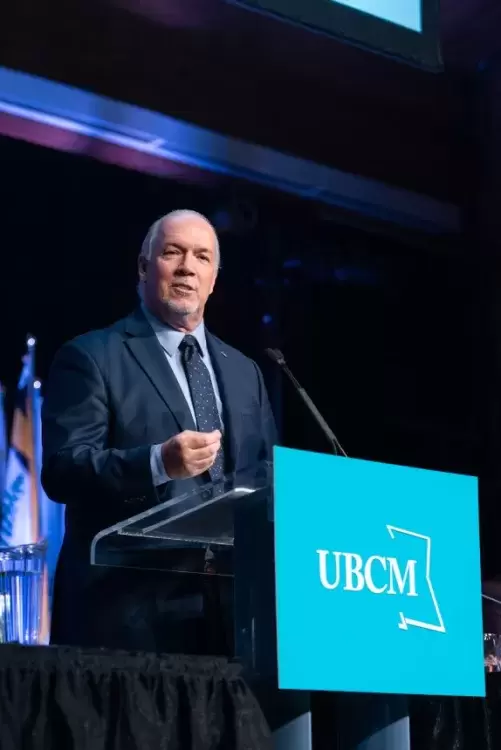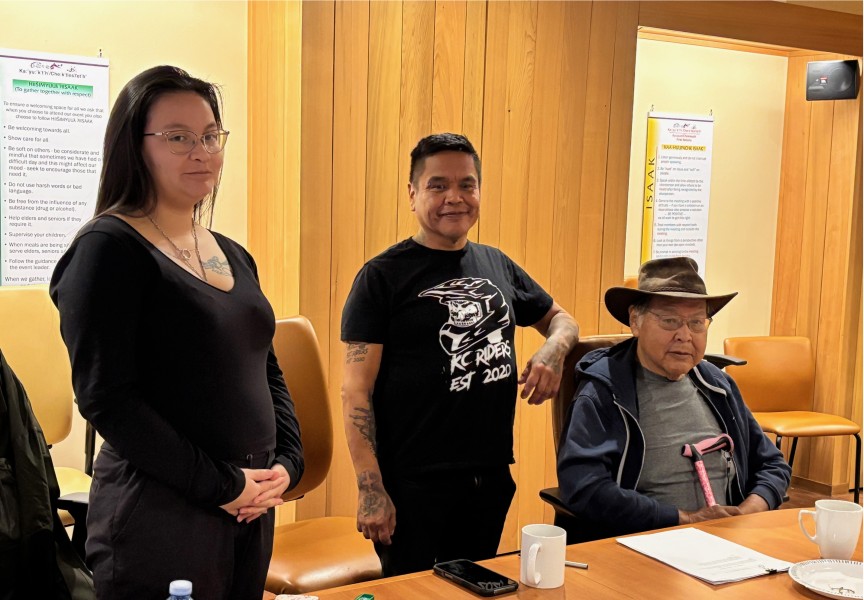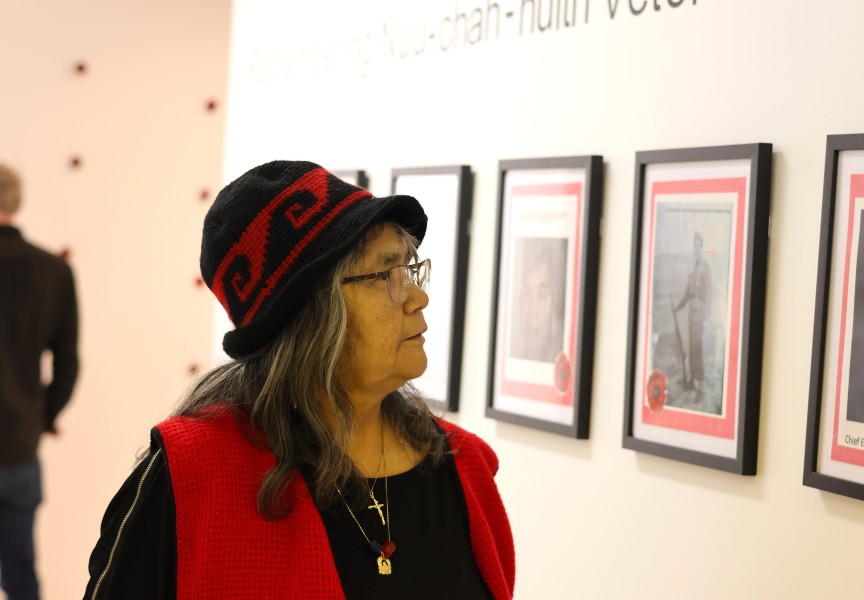Huu-ay-aht First Nations delegates have returned from their first foray into the annual Union of B.C. Municipalities convention, where they sought progress on a list of priorities topped by child welfare, LNG development and road improvements.
Chief Councillor Robert Dennis Sr., together with councillors Sheila Charles and Trevor Cootes, joined municipal counterparts at AGM tables in Whistler in mid-September and took advantage of one-on-one meetings with provincial cabinet ministers.
HFN is among the first B.C. First Nations to assume a role as an independent government in UBCM convention proceedings.
“I found it very worthwhile in terms meeting with elected officials,” Dennis said. “There’s more understanding in our area that we have to work together.”
They were disappointed, however, in the provincial government’s refusal to concede legal defeat in the Huu-ay-aht child welfare case referred to as “Baby VS.”
Charles said they had two objectives in a meeting with Minister of Children and Families Katrine Conroy. One was to express appreciation for the ministry’s commitment to assuring better outcomes for HFN children and youth in care, the other was to convince the minister to drop the government’s legal stance over “Baby VS.”
“We let them know we were disappointed in the case of Baby VS.,” Charles said.
The case stems from the apprehension of a three-day-old HFN child, a case that the First Nation fought and won in B.C. Supreme Court. Since the court’s ruling in March, the infant has remained with the young mother under the condition that the necessary community supports remain available.
Conroy told the Huu-ay-aht delegates she could not interfere in a case before the court, frustrating the HFN delegation, which had hoped to return to Anacla with good news.
“If B.C. goes ahead and challenges us on that, that to me is not reconciliation,” said Charles. The province has acknowledged that its Aboriginal child welfare system is flawed, she noted.
While a challenge to the ruling has not been filed in court, the province has not backed down from its original case against the mother. The case will go before a judicial review of the decision in the coming weeks.
“The province isn’t appealing against Huu-ay-aht’s previous wins,” said Maegen Giltrow, lawyer for the Huu-ay-aht First Nations, in an email. “What it is doing is continuing to defend the actions of the ministry in the ongoing BC Supreme Court proceeding that Huu-ay-aht started. Huu-ay-aht has asked that, in light of the rulings already made by the courts in this case, the ministry withdraw its defence of the ministry’s actions.”
The local situation is bound up in the horrific legacy of the residential school era because it perpetuates the cycle of family separation, Charles said. Aboriginal children in B.C. are 17 times more likely to be in government care than other children. There are 42 Huu-ay-aht kids in care at the moment. When Charles was first elected to council seven years ago, the figure was 18.
Dennis said HFN intends to protect what they’ve gained as court proceedings continue.
“Unfortunately, it puts us in a confrontation,” he said. “We will be seeking NTC support for a legal defence,” he added.
Giltrow noted that there is a possibility that this confrontation might not proceed.
“It is also important to note that the Ministry has not formally said ‘no’ yet—they will be seeking instructions this week and getting back to me before our Oct. 9 case management conference,” she said.
HFN is also pressing the provincial government to step up with a contribution to chip-sealing the rough road between Bamfield and Port Alberni. They already have a commitment from Ottawa through federal infrastructure funding. HFN is prepared to contribute to road maintenance, but the province’s position hinges on jurisdiction since the industrial road crosses provincial Crown corridor.
“We’ve asked them to address ownership,” he explained
Progress to advance the Kwispaa LNG export project continues as well.
“Our objective, as a partner in the project, is to meet B.C.’s greenhouse gas targets,” Dennis said. “That’s what we’re attempting to do now.”
HFN holds an equity stake and acts as co-manager in the LNG proposal, which involves floating production and storage units near a site owned by the nation at Sarita Bay. A final investment decision is expected by 2020.
Treaty and non-treaty First Nation governments may apply to join the union as long as they have elected representation and taxation authority as well as the ability to exercise regulatory power and provide services.
UBCM President Arjun Singh, a Kamloops city councillor, said First Nations participation in union conventions isn’t new.
“There’s always been a strong presence of Indigenous community leaders in UBCM,” said Singh. “We certainly hope it can grow.”
One of Singh’s predecessor, Harry Nyce, a hereditary Nisga’a chief, served as UBCM president several years ago. Nyce’s home — Gitwinksihlkw in the Nass Valley — was the first Aboriginal community to join the UBCM.
In a closing address to AGM delegates, Premier John Horgan reasserted his government’s promise to pursue reconciliation.
My government is steadfastly committed to reconciliation,” Horgan said in a speech that also touched on the impending legalization of cannabis, housing, wildfire and LNG.







